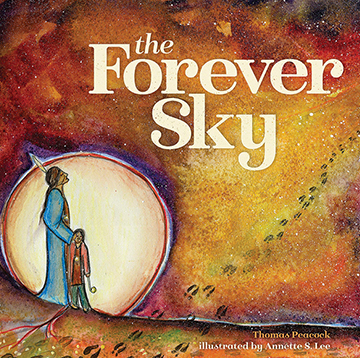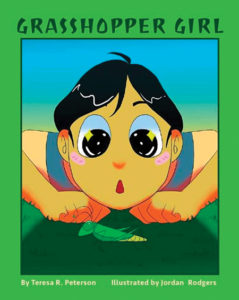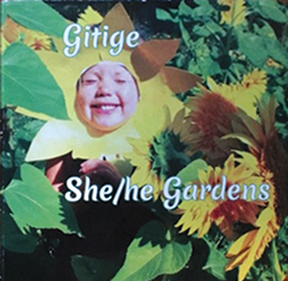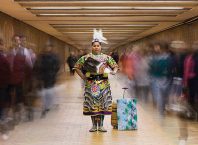
Reviews by Deborah Locke
When I read a children’s book that in any way is connected with American Indians, a couple of criteria stand out. Does the book describe history, culture or values in a way that American Indian children will understand? Is there a ring of truth in the story? Does the book invite the reader to imagine? Are the illustrations of high quality? Is it something I would recommend to my own relatives as an important contribution to a child’s library?
Three children’s books crossed my desk this month and in their own ways, each meets a part and sometimes all of the criteria.
The Forever Sky
“The Forever Sky” is a beautifully told and illustrated story about two boys whose grandmother died, and they seek solace in a meadow, looking at the sky. They understand that the stars with distinct shapes carry stories. The Milky Way is noted, the path of souls that leads to the land of souls.
Then one night the Northern Lights appear and dancers take shape in the heavens, swirling and swooping and bringing comfort to the children. They bring their uncle to the meadow to watch, and then other relatives, all to witness the swirling sky. One very special night, they receive a message.
Fond du Lac band member Thomas Peacock wrote “The Forever Sky” (Minnesota Historical Society) which was illustrated by Annette Lee, a Lakota-Sioux and professional visual artist. Peacock’s words and Lee’s illustrations are simply amazing, and beautifully complement each other. In fact, the words and pictures are so well done that they also stand alone. Peacock’s story could be read from a podium without pictures and still have an impact on listeners. Lee’s illustrations are so exceptional that a couple from this book could stand alone as wall paintings. It’s as though the writer, illustrator and publisher decided that children who read deserve the best there is, the best words and the best pictures. You’ll find both here. I just love this book.
Grasshopper Girl

Illustrated by Jordan Rodgers
Publisher: Black Bears and Blueberries Publishing, 2019
“Grasshopper Girl” by Teresa R. Peterson, Sisseton Wahpeton, is the story of a little girl who can’t wait for her dad to get home so he can tell her a story. In style and content, the trickster story is similar to ones actually told by Peterson’s grandfather to her mother when she was a child. Blended into the narrative is Dakota vocabulary, which increases the educational value of the story.
Grasshopper Girl is a lively and headstrong child who goes to bed but not to sleep because her dad, Ate, is sure to arrive at any minute. He does arrive and tells Grasshopper Girl a story that is a cautionary tale about listening to the wisdom of others so you literally do not crack your skull. The illustrations by Jordan Rodgers are small and simple and invite the reader to ask a child questions. Who is in that picture? What are they doing? What do you think Unktomi (Trickster) will do next? The book was published this year by Black Bears and Blueberries Publishing.
Gitge She/he Gardens

Photographer: Autumn Aubu’t
Ojibwe language: Tom Jack, Tara Dupuis, Marcus Ammesmaki, and Jodie Locking.
Finally, “Gitge She/he Gardens” (Black Bears and Blueberries Publishing, 2019) is for the toddlers in the family with small hands designed for small books and thick cardboard pages. This small volume is heavy on Ojibwe vocabulary, contains no real story line, but does show children in the Fond du Lac Reservation Head Start program busy planting. If you are familiar with FDL, you’ll recognize where the children are and you may even recognize the children. As you might expect, the little kids are cuter than cute.
Clearly the main objective here is to teach language, which means both the reader and read-to will benefit from the Ojibwe language lessons for seed (miinikan), hot day (giizhate), yellow (ozaa), and water (nibi). Close to 50 words are introduced. If you see value in helping your three-year-old become a lifelong book lover, start small with “Gitige She/he Gardens.”






